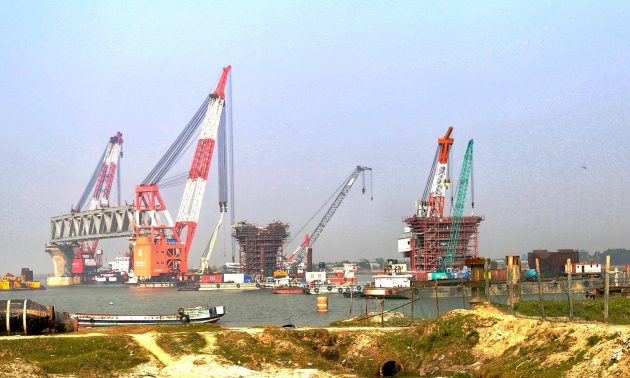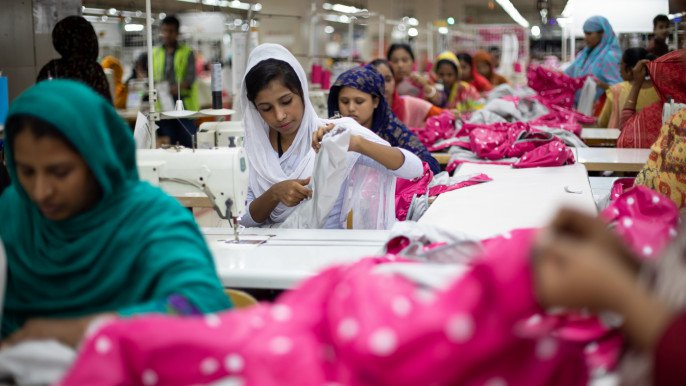Published in Asia Time on March 27, 2018

As Bangladesh, a country of more than 160 million people and an economy worth US$686.5 billion, enters a stipulated six-year graduation period to become a “developing country” by 2024, policymakers expect a few rough patches ahead.
A linear export basket with focus on just one product, the slow pace of infrastructural developments, and a lack of an educated and skilled workforce could collectively become the country’s Achilles’ heel for achieving the status.
Besides, graduation is a process upon completion of which a country leaves a United Nations category. In the case of Bangladesh, it would leave the category of Least Developed Country (LDC). That means the country will no longer be eligible for certain international support measures in the areas of trade, official development assistance, climate-change support, travel, and other areas.
Economists, however, are mostly optimistic, saying that if Bangladesh can sustain its stable progress as well as and growth, and can negotiate a few fruitful trade deals, it should ultimately have no problem in leaving the LDC bloc, despite the anticipated political turmoil ahead.
Graduation to ‘developing country’
Last Friday, Bangladesh became eligible to graduate to a developing country after it scored above the threshold in all three criteria – gross national income (GNI) per capita, Human Assets Index (HAI) and Economic Vulnerability Index (EVI).
Bangladesh has been in the LDC bloc since 1975 after achieving its independence from Pakistan in 1971. Two other countries – Myanmar and Laos – that were in the same bloc have also become eligible along with Bangladesh to enter a graduation period in the latest round of country reviews by the UN Committee for Development Policy (CDP).
The UN gave LDC status to 17 countries in 1971. Currently, the total number of LDCs is 47. Five countries have so far graduated from this status: Botswana in 1994, Cape Verde in 2007, Maldives in 2011, Samoa in 2014, and Equatorial Guinea last year.
The CDP reviews the list of LDCs every three years and makes recommendations on the inclusion and graduation of eligible countries. The last review was done in 2015 when three countries, including Nepal and Bhutan, became eligible for graduation from the LDC bloc.
The scores required for graduation from the LDC category are a per-capita GNI of $1,230 or above, an HAI of 66 or above, and an EVI of 32 or below. Bangladesh’s current GNI per capita is $1,724, its HAI is 72 and EVI is 25.2.
The CDP will review Bangladesh’s progress in 2021, followed by the country’s official graduation from the LDC category after a three-year transition period. If the country maintains its position in all three categories for the next six years, it will eventually graduate from the LDC bloc by 2024.
Graduation will ‘certainly’ take place
Dr Zahid Hussain, lead economist at the World Bank’s Dhaka office, told Asia Times that Bangladesh so far is the only country to have met the three criteria at the same time in order to be eligible to graduate from the LDC bloc.
“We will still need to pass two more reviews in 2021 and 2024 to get out of the LDC bloc, but I am certain about its successful graduation,” he said, but added that the country will face challenges in three main areas in the process.
First is the lack of infrastructure, said the WB economist. “Bangladesh has taken a number of large infrastructure projects but the progress on those projects is slow, which it needs to escalate.”
The second challenge is the existing rules and regulations, which he thinks make the “cost of doing business unnecessarily high in Bangladesh.”
And third, there is human-resource development. “We have a large, capable young workforce, but they still lack skills and education. Bangladesh is not cashing in on its demographic dividend, and if it continues [not] to do so, then it will hurt the economy in the long run.”
Economist Dr Mirza Azizul Islam said that in the GNI and HAI criteria, Bangladesh “certainly wouldn’t face any hiccups,” but as a country prone to natural disasters, it might face problem in sustaining its EVI score. “I, however, see no scope of remaining in the LDC bloc any more,” he added.
Problems and pitfalls along the way
Islam, who was the economic adviser – equivalent of finance minister – of the last caretaker government of Bangladesh, told Asia Times that the end of preferential market access for the country’s products and increased cost of foreign loans could pose problems.
Dr Khondokar Golam Moazzem, research director of the Center for Policy Dialogue (CPD) – Bangladesh’s premier think-tank – said the country was likely to lose about $2.7 billion in export earnings every year once it graduates from the LDC bracket.
Moazzem told Asia Times that Bangladesh now enjoyed preferential access of varying degrees to markets of more than 40 countries. “But the country’s exports will face an additional 6.7% tariff once it graduates from the LDC status and exports may fall by 5.5-7.5% as a result of withdrawal of preferential access,” he said.
The CPD economist said Bangladesh needed both economic and market diversification. “Our export basket is almost solely full of ready-made garments, and this is not good for an economy [striving] to attain ‘developing’ status,” he said.
Moazzem also said Bangladesh needed to focus on free-trade agreements to get access to new markets. “The possible countries could be China, Turkey, Vietnam and India,” he said.
Talking with Asia Times, Dr Selim Raihan, executive director of the South Asian Network of Economic Modeling (SANEM), said it was very important that the capacity of Bangladesh’s social infrastructure is enhanced to achieve the desired economic growth rate.
“Otherwise Bangladesh would fall into the ‘middle-income trap,’ a state where a number of countries are stuck in the lower-middle income status and are unable to move up,” he said.
He added that the current status of the education and health sectors in Bangladesh was far from satisfactory in generating the required human capital. “With the business-as-usual scenario in those areas, Bangladesh will not be able to achieve many of the SDGs by 2030,” he said, referring to the Sustainable Development Goals.
However, Raihan believes that Bangladesh will be able to complete the LDC graduation process and will become a developing country by 2024.
“I don’t see much uncertainty in this process. One of the important aspects of Bangladesh’s development over the past three decades or so is that the change in the government has not impacted much on its development trajectory,” he said when asked about the possible impact of political turmoil ahead on the graduation process.
 CPD RMG Study Stitching a better future for Bangladesh
CPD RMG Study Stitching a better future for Bangladesh



